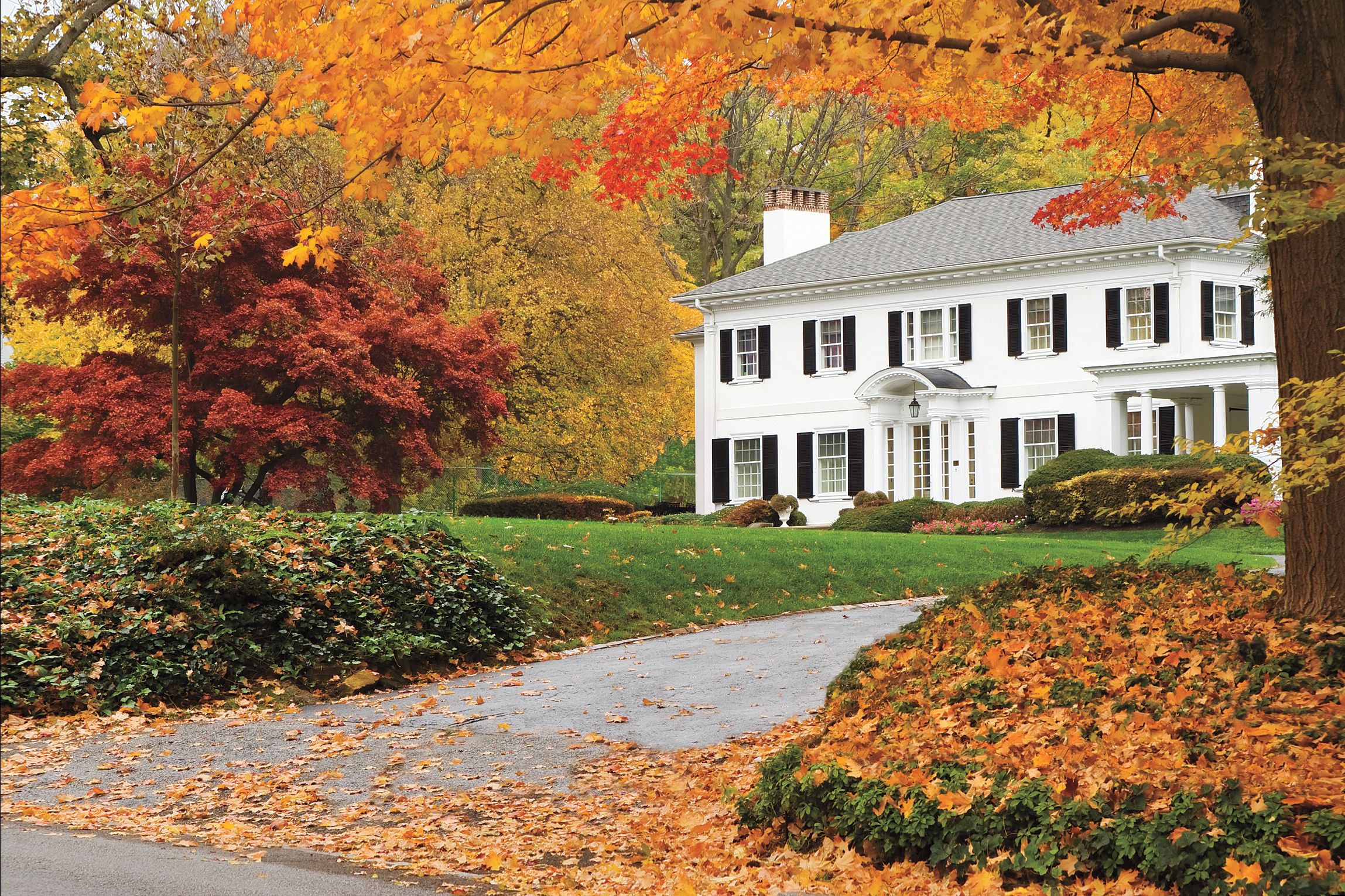Nothing says autumn like fall foliage. The right trees can set your yard on fire with vibrant reds, oranges, and yellows. Read our guide below for tips on which trees and shrubs produce the best colors, including Smokebush, Witch Hazel, and many more.
Gingko
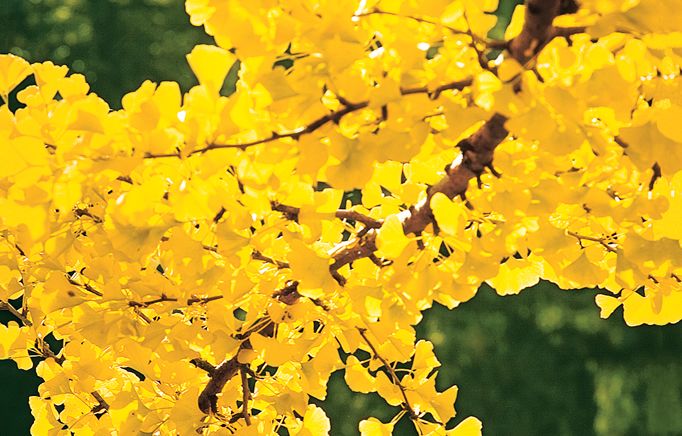
(G. biloba)
Ginkgo trees are living fossils and the last survivors of tree varieties that flourished 200 million years ago. They produce yellow, fan-shaped leaves in the fall that resemble maidenhair ferns and can grow up to 80 feet tall. This makes them suitable for various landscape sizes.
Ginkgos can live for centuries and are highly adaptable to urban environments. They can survive pollution and complicated soils better than many other tree species. Choose male cultivars when planting a ginkgo, as female trees can produce smelly fruit. Plant your trees in full sun and give them moderate amounts of water.
Smokebush
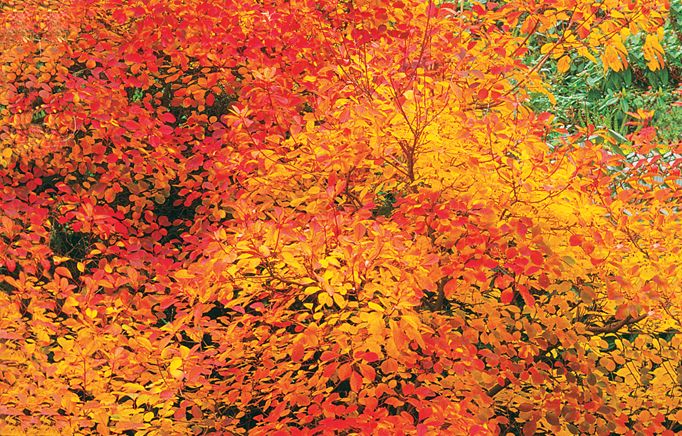
(Cotinus coggygria)
Smokebush, also known as smoketree, can develop as a shrub or a small tree. This plant produces small yellow flowers in June, and long, fuzzy stalks grow shortly thereafter, creating the illusion of smoke around the plant. In fall, the leaves transform into stunning shades of yellow or orange-red.
Smokebush is a relatively low-maintenance and drought-tolerant plant, which makes it a great choice for busy homeowners or those in especially water-conscious regions. It likes full sun and moderate amounts of water.
Consider these cultivars:
- Ancot: Lime-green leaves that transition to orange
- Golden Spirit: Golden yellow leaves that shift to coral red and orange
- Royal Purple: Purple foliage that turns scarlet red
Katsura Tree
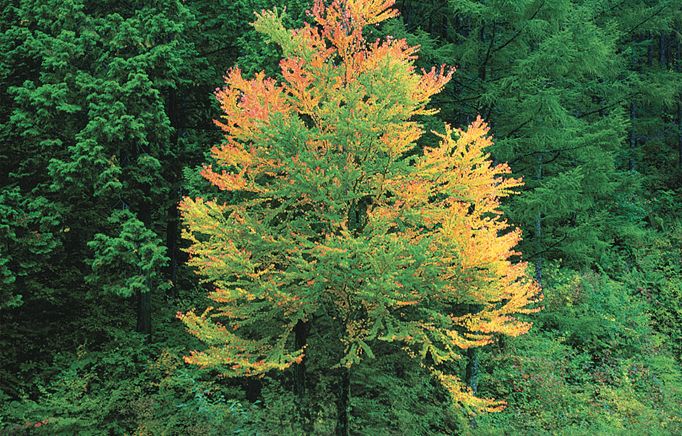
(Cercidiphyllum japonicium)
The katsura tree produces heart-shaped leaves that are reddish-purple in spring, blue-green in the summer, and pinkish-yellow in the fall. As the leaves drop, they release a sweet fragrance that’s similar to the smell of brown sugar or cotton candy.
Young katsuras have a pyramidal shape, but as they mature, they can grow to be 60 feet tall and 60 feet wide. If you don’t have the space for this, consider weeping varieties such as Amazing Grace, which showcases graceful, cascading branches year-round.
Katsura trees prefer moist, well-drained soil, light shade, and regular waterings. They’re relatively pest- and disease-resistant, which makes them low-maintenance landscape trees.
Witch Hazel
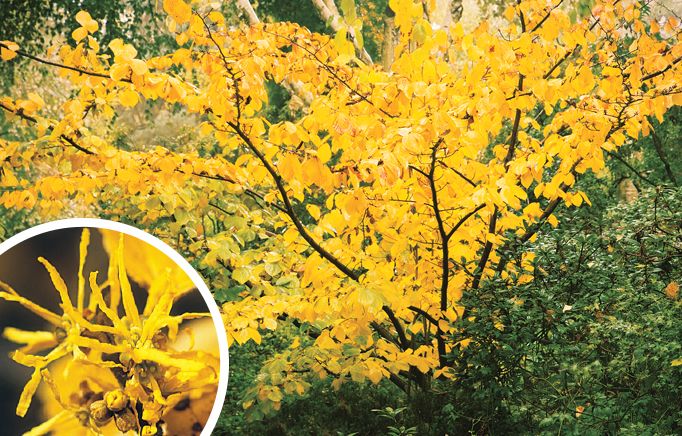
(Hamamelis virginiana)
Witch hazels offer brilliant blooms that produce yellow leaves in early autumn. As leaves fall, the plant’s distinctive spidery yellow petals emerge, which produce a spicy, sweet fragrance.
Witch hazel attracts pollinators such as bees, wasps, and other insects that can help to protect your landscape from pests such as leafcutter worms and slugs. These trees prefer partial shade and regular amounts of water.
Consider some of the popular witch hazel varieties below.
- Hamamelis vernalis Amethyst: Purple-red flowers and a more compact growth habit
- Hamamelis x intermedia Arnold Promise: Bright yellow flowers and excellent fall color
- Hamamelis x intermedia Diane: Copper-red flowers and vibrant fall foliage
Pomegranate
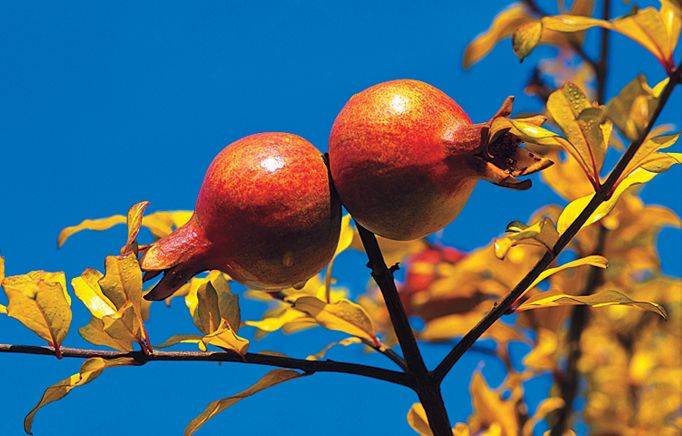
(Punica granatum)
Pomegranate trees are suitable for homeowners in warm climates who want simple dashes of fall color. Their bright yellow autumn leaves create a striking contrast against red fruit that resembles festive ornaments.
Pomegranates can thrive in various soil types, and can become drought-tolerant once they establish themselves in your yard. They prefer full sunlight and regular amounts of water.
Some popular edible varieties include the following:
- Ambrosia: Offers sweeter fruit with soft seeds
- Angel Red: Features softer seeds and high juice content
- Wonderful: Produces large, deep red fruit with juicy, flavorful seeds
Consider the following varieties if you’re interested in ornamental, inedible plants:
- Chico: Double orange-red flowers that resemble carnations
- Nana: Single orange-red flowers and small, non-juicy fruit
Blueberry
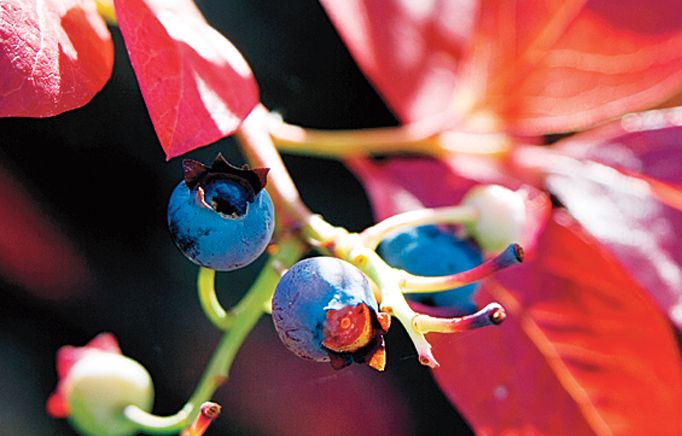
(Vaccinium spp.)
Blueberry bushes are vibrant all year long and produce spring flowers, summer fruit, and stunning fall foliage. Their leaves turn shades of yellow, orange, or wine red in autumn, depending on the species and growing conditions.
Plant blueberries in well-draining, acidic soil and partial shade. Mulch with pine needles or bark to help maintain soil acidity and moisture. Remember to plant at least two different varieties for cross-pollination, and give your plants regular amounts of water.
Keep your climate in mind when choosing your blueberry plant:
- Northern highbush varieties: Best for colder regions
- Southern highbush or rabbiteye varieties: Ideal for warmer areas
- Sunshine Blue: An evergreen variety that performs well in most climates
Red-Twig Dogwood
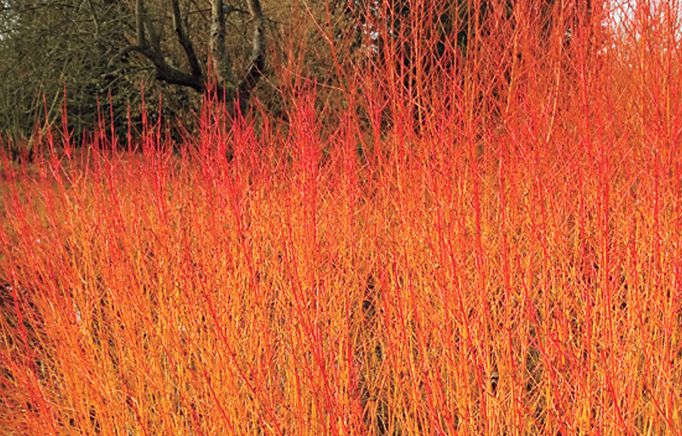
(Cornus spp.)
Red-twig dogwoods are famous for their lovely winter stems but also produce beautiful fall colors. Leaves turn brilliant shades of red or reddish-purple before they drop, which creates a stunning prelude to the winter show. Red-twig dogwoods also feature clusters of white flowers in spring, and white and red-purple fruit that attracts birds.
To achieve the best stem color, prune out about one-third of the oldest stems each spring. This encourages new growth, which amounts to especially bright colors. Red-twig dogwoods like partial shade and regular amounts of water.
Popular varieties include the following:
- Arctic Fire: Compact growth (3–4 feet tall) with bright red stems
- Baileyi: Larger shrub (6–8 feet tall) with dark red stems
- Flaviramea: Yellow-twig variety with reddish-purple fall foliage
Maple

(Acer spp.)
Maples are quintessential fall foliage trees and are available in a wide range of sizes and colors. The sugar maple (Acer saccharum) is renowned for its brilliant autumn display, but many other options work for smaller spaces or different growing conditions.
When planting maples, avoid invasive species such as Amur (A. ginnala) and Norway (A. platanoides) maples. Instead, choose native or noninvasive cultivars.
Maples like partial shade and regular amounts of water. Consider the varieties below for beautiful fall color:
- Japanese maple (A. palmatum): Compact size with delicate leaves in various colors
- Vine maple (A. circinatum): Native to the Northwest, with vibrant fall hues
- Red maple (A. rubrum): Fast-growing with early fall color
Redbud
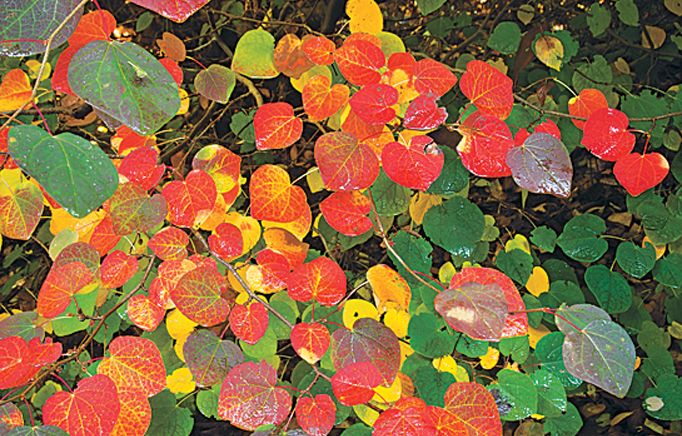
(Cercis spp.)
Redbud trees offer multiseason blooms. They start with pinkish-purple spring flowers that progress into cheerful yellow leaves in the fall. Some varieties, such as Forest Pansy, display reddish-purple fall foliage.
These small trees add color and texture beside evergreens, or as understory plants in woodland gardens. Their heart-shaped leaves and delicate branching structure are beautiful even in winter, and especially when adorned with long, mahogany seed pods.
Redbuds like light shade and moderate amounts of water. Popular varieties include the following:
- Eastern redbud (C. canadensis): Adaptable and popular
- Hearts of Gold: Golden-yellow spring foliage that turns green, then yellow, in fall
- Western redbud (C. occidentalis): Drought-tolerant and native to western states
Our Conclusion
Between the golden ginkgo and the fiery red maple, these plants offer a range of sizes, shapes, and hues to suit any garden style. Select a mix of these fall foliage stars to offer year-round interest to your outdoor space.
